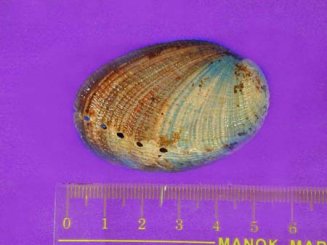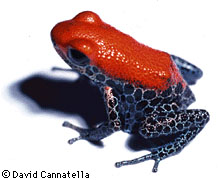The most potent neurotoxins in an animal known to man so far may be that of the Australian Irukandji box jellyfish. Although the jellyfish's bell is barely the size of a thumb nail and only has four trailing tentacles, it's venom appears more potent than that of the its much larger and far more notorius Fleckeri box jellyfish.

The Irukandji was only recently discovered in the past decades, after a dedicated doctor, James Barnes, spent days int eh reef tryign to contract the then mysterious "Irukandji syndrome" - a strange onset of nausea, pain, and cramping, sometimes severe enought o cause hospitalization, that had been regularly reported by reef swimmers yet without any visiable cause. When a small, odd looking jelly swam into his face mask, he let it sting him as well as two other volunteers to see it this was the culpruit. All three ended up int eh hospital with severe "Irukandji syndrome" symptoms. For this discovery, the species was named for Dr. Barnes: Carukia barnesi
Since this discovery of the species, the Irukandji has been linked to at least two deaths. Part of its deadliness lies in its toxin. It is 4 times deadlier than the Fleckeri box jelly and over 100 times more potent than a cobra. It is likely due to its size and small number of tentacles that its venom hasn't killed more often. Another reason why the Irukandji is so potent is that unlike other jellies, the the barb-laden mechanisms on the tentacles do not contain only a single barb, but dozens - allowing for a swifter delivery. Also unlike other jellies, it has this stingers on its bell.
The Irukandji poses a unique threat to swimmer and divers. It is too small to readily spotted before the swimmer's within contact range or to be caught by the nets uses to keep the Fleckeri box jelly out of swimming waters and its life cycle is largely unknown. However, recent studies connecting the the Irukandji to its favorite prey - small fish that follow plankton swarms - may help predict the appearencee of the jelly at certain times of the year.
















